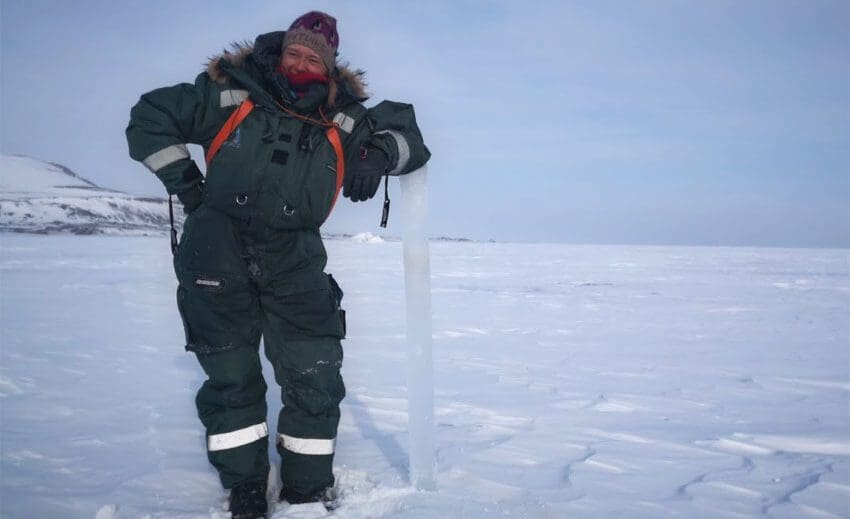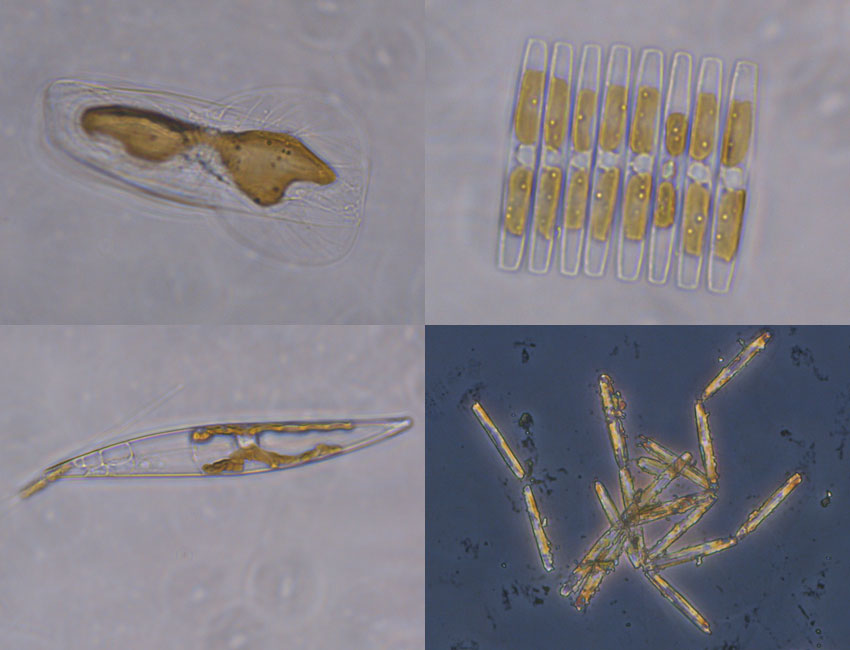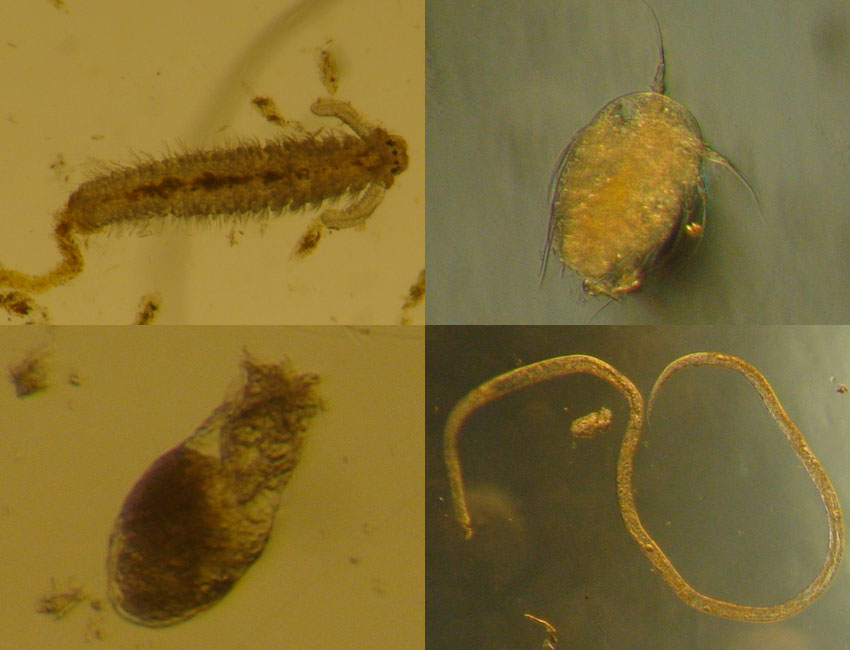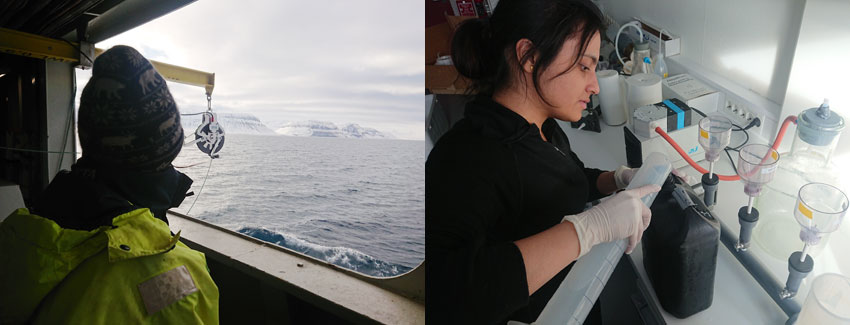Biodiversity Day in Svalbard

Research assistant Vanessa Pitusi with a 130 cm long sea ice core in Mohnbukta, east coast of Spitsbergen, 11 May 2020. (Photo: Janne Søreide/UNIS).
Top image: Research assistant Vanessa Pitusi with a 130 cm long sea ice core in Mohnbukta, east coast of Spitsbergen, 11 May 2020. (Photo: Janne Søreide/UNIS).
Today is the International Day for Biological Diversity or World Biodiversity Day. We mark this important day by having a couple of our scientists present the work they do within marine biodiversity in Svalbard, whether in the sea ice on the east coast or in Isfjorden outside Longyearbyen.
22 May 2020
Mapping sea ice biodiversity
Text by research assistant Vanessa Pitusi and Associate Professor Janne E. Søreide, UNIS.
Not only seals and polar bears use sea ice, but also thousands of other microscopic plants and animals, which are unfortunately poorly studied. These tiny creatures hide inside the many small channels and pockets within the sea ice made by salt being rejected while freezing.
Algae living in sea ice are the best studied and comprise of more than 1000 species; of the tiny animals only a handful species is known so far. These are very difficult to identify since we lack morphological description and corresponding DNA sequences of them in databases. In the spring, up to 400 000 animals per square meter can be found within sea ice and they mainly comprise of larvae of animals living at the seafloor. The sea ice is an attractive nursery ground for them since here they can feed on algae without the risk of being eaten themselves. In Svalbard, sea ice is diminishing much faster than anticipated. Thus, UNIS is now putting in an effort to map sea ice biodiversity. It is crucial to understand the role of sea ice for the microscopic animals and plants, as this unique habitat may be lost in the future.
This work is of such high interest that even during the Covid-19 pandemic, UNIS prioritized field- and laboratory work for sea ice related projects such as the De-icing of the Arctic coast (ACCES) project (www.acces-arctic.com), funded by the 2017-2018 Belmont Forum and BiodivERsA joint call for research proposals, under the BiodivScen ERA-Net COFUND programme. Fjord ice on the west and east coast of Spitsbergen is accessed with snow mobiles and sea ice cores are collected from pre-selected points. Not only is data on the plants and animals within sea ice collected, but also information on sea ice thickness and snow cover.
(More below the pictures).


Finding out how water conditions affect biodiversity in Isfjorden
Text by Cheshtaa Chitkara, PhD candidate in marine biology, UNIS
I study organisms smaller than what your eyes can see. These are called Protists. Protists are a large group of organisms capable of being anything from producers to consumers to decomposers to even parasites. Protists have short generation times and therefore show rapid response to the environment. They can even change their diet depending on availability or form spores until conditions get back to normal again. These marvellous creatures help me map the change in climatic conditions in a local ocean-based station in Isfjorden, located near the Svalbard airport. This station, called Isfjorden-Adventfjorden time series station (IsA), has been maintained by the UNIS Arctic Biology department for the past nine years (and counting). Such time series stations are important to study changes over the years. This station is very special in terms of its oceanography and gives an idea of the differences in water temperatures, nutrient concentrations, light measurements, salinity etc. and with this range of information we can detect how many organisms are present at IsA, i.e. the biodiversity of Isfjorden. Questions we like to answer are such as: Will their communities change if we experience a warmer climate? If they will change, how many will disappear? Are there new species that have come to because of new conditions? Are their ecosystems functions changing?
My job is to sample water every month at IsA and study the change in diversity of organisms or species in the fjord. We want to test this, because of a noted increase in inflow of warm Atlantic water into the Svalbard fjords. Atlantic water inflow is a common phenomenon, but the amount and duration of inflow varies from year to year (which is the main reason why some years have a lot of sea ice and some don’t). IsA is therefore an excellent place to study how water conditions affect the biodiversity – a model system for climate change effects.
